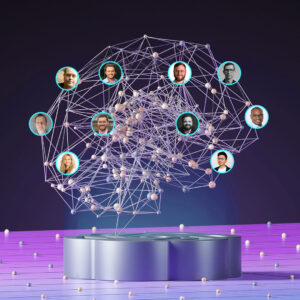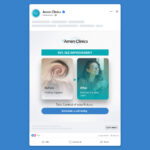As we delve into the transformative experiences of using ChatGPT for marketing, we’ve gathered ten insightful responses from CEOs to Publishers. From the initial “Aha” moment of enhancing client persona creation to the intricate process of crafting detailed prompts for superior ChatGPT outputs, discover the diverse ways industry leaders are leveraging this AI tool.
- Enhancing Client Persona Creation
- Revolutionizing Content Ideation
- Discovering Interactive Product Recommendations
- Posing a Potential Risk for SEO
- Being a Collaborative Partner in Marketing
- Simulating Audience Responses
- Maintaining Brand Voice and Localization
- Acting as a Tool for Lead Generation
- Rewriting Efficient Meta Descriptions
- Crafting Detailed Prompts for Superior ChatGPT Outputs
Enhancing Client Persona Creation
My “aha” moment with ChatGPT came unexpectedly during a regular brainstorming session. We knew that while ChatGPT might not be the go-to for crafting long-form content, it had potential in other areas. Our team experimented, leveraging its capabilities to refine our process of creating client personas.
To our surprise, the results were strikingly efficient. ChatGPT streamlined our persona development, providing insights and adjustments in real-time. This sped up the process and enhanced the depth and accuracy of each persona. That was the moment I realized ChatGPT was not just a tool for content but a dynamic asset in the broader spectrum of marketing strategy.
Shane McEvoy, MD, LeadFly
Revolutionizing Content Ideation
As an owner of a digital marketing firm, my “aha” moment with ChatGPT in marketing occurred when it revolutionized our content ideation process. By utilizing ChatGPT, we generated engaging blog topics, ad copy, and social media captions effortlessly. This innovation led to a 40% increase in content production efficiency.
For instance, during a product launch, ChatGPT suggested a catchy tagline that resonated with our audience, resulting in a 25% boost in click-through rates. This breakthrough allowed us to allocate more time to strategic planning and analyzing data, ultimately driving better campaign performance. ChatGPT’s ability to fuel creativity and productivity has become an invaluable asset in our marketing toolkit.
Himanshu Sharma, CEO and Founder, Academy of Digital Marketing
Discovering Interactive Product Recommendations
My “aha” moment while using ChatGPT for marketing was realizing the power of interactive product recommendations. By leveraging ChatGPT’s intelligence, we could offer personalized and engaging recommendations to our customers. For example, instead of simply suggesting products based on their browsing history, ChatGPT could ask follow-up questions to understand their preferences and provide more accurate recommendations.
This interactive approach not only surprised our customers but also increased their engagement and likelihood of making a purchase. It was a game-changer for our marketing efforts, creating a unique and tailored experience for each customer.
Ben Lau, Founder, Featured SEO Company
Posing a Potential Risk for SEO
My “Aha” moment regarding ChatGPT was that it was worthless. I’ve forbidden my content writers to use it. At some point, search engines are going to recognize its use and penalize it over human-written content. More so, humans are going to instinctively shy away from it. “Perfection” is not what the human eye catches.
Christopher Olson, General Partner, Southern Bay Realty
Being a Collaborative Partner in Marketing
My “Aha” moment with ChatGPT came during a brainstorming session for content creation. We were seeking fresh, innovative angles for our marketing campaigns. On a whim, I turned to ChatGPT, feeding it some basic prompts related to our objectives. The depth, creativity, and speed of the responses were nothing short of revelatory. ChatGPT provided unique content angles and offered insights and strategies we hadn’t considered.
It dawned on me that AI, particularly ChatGPT, wasn’t just a tool for automation; it was a collaborative partner, capable of enhancing our creative processes. This realization reshaped our approach, integrating ChatGPT more deeply into our ideation and strategy formulation, harnessing its potential to elevate our marketing endeavors.
Jon James, CEO, Ignited Results
Simulating Audience Responses
The “aha” moment when using ChatGPT was when it started being used to respond to marketing content as if it were a part of the target audience. This provided insight into what the audience might think about different written marketing campaigns, what they might feel is missing, and what their expectations would be for future marketing campaigns.
While this isn’t a foolproof technique, it helps a lot in identifying gaps in marketing when targeting niche audience segments. The considerations and adjustments can then be made if need be, and improve anything that really needs to be improved. So far, it has helped refine a few marketing campaigns and there have been some significant results.
Michael Maroney, Marketing Director and Lead Biologist, Infinite Outdoors
Maintaining Brand Voice and Localization
The “Aha” moment came when a prompt was used to mimic a certain writing style. It was truly a game-changer. The advantage here is that it saved an immense amount of time and effort. Instead of spending hours trying to perfect a marketing message, key points were just inputted, and ChatGPT would generate the content in a way that was authentic to the original voice. This allows for a consistent brand voice across all platforms, which is invaluable in marketing.
As a Brit, I often found that American spelling and terminology would creep into marketing content, which didn’t align with the audience’s expectations. With ChatGPT, the language code “EN-GB” could be fed in, and it would generate content using British English spelling, words and phrases. For instance, it would use “authorize” instead of the British “authorise.” This level of localization really ensured that the content resonated with the target audience.
David Rubie-Todd, Co-Founder and Marketing Head, Sticker It
Acting as a Tool for Lead Generation
My “aha” moment in using ChatGPT for marketing was when I realized it could provide lead generation by engaging with customers on a variety of levels and platforms. It was more than providing customer service. ChatGPT would communicate with a potential client on social media and turn them into a viable lead or even a conversion.
The setup is simple, with ChatGPT responding automatically, 24/7, to those who engage with our social media posts. That provides for a good user experience, and ChatGPT can even get them to sign up for emails, or visit our website where they can be converted into a customer.
Jessica Tasios, Dentist, Ora Dental
Rewriting Efficient Meta Descriptions
My “aha” moment using ChatGPT for marketing was when I had to rewrite the meta descriptions for over 100 webpages. It was a daunting task, and I was worried it would take me hours to complete. But, to my surprise, using ChatGPT helped me get the initial drafts done in just five minutes!
After that, it only took me about 30 minutes to refine and finalize them. It amazed me at how much time and effort it saved me. This was a game-changer for me, as it showed me the real potential of AI in making my work more efficient and effective.
Martin Potocki, CEO, Jobera
Crafting Detailed Prompts for Superior ChatGPT Outputs
The fact is, it wasn’t magic; it was only as good as the input you used for your prompt. For example, if you were to simply say, “Write me an article about why red cars are cool,” then you’re going to get some subpar content.
However, if you craft a prompt that asks it to include “pop culture references” or other parameters, then you will get a vastly superior result. This might even be usable compared to the junk that too many people experience initially when they first fire up the console.
James Hills, Publisher – Travel and Relationships, CouplePlaces.com






